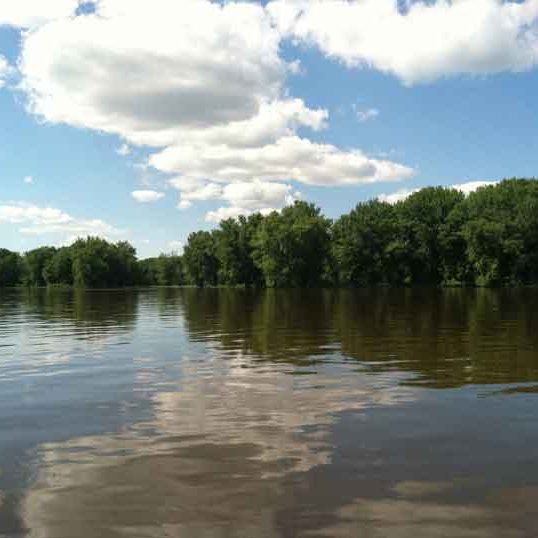
History of the Mississippi River
The Spanish explorer Hernando De Soto is credited with the European discovery of the Mississippi River in 1541. The French explorers Jacques Marquette and Louis Jolliet reached it through the Wisconsin River in 1673, and in 1682 La Salle traveled down the river to the Gulf of Mexico and claimed the entire territory for France. The French founded New Orleans in 1718 and effectively extended control over the upper river basin with settlements at Cahokia, Kaskaskia, Prairie du Chien, and St. Louis. France ceded the river to Spain in 1763 but regained it in 1800; the United States acquired the Mississippi River as part of the Louisiana Purchase in 1803.
A major artery for the Native Americans and the fur-trading French, the river became in the 19th cent. the principal outlet for the newly settled areas of mid-America; exports were floated downstream with the current, and imports were poled or dragged upstream on rafts and keelboats. The first steamboat plied the river in 1811, and successors became increasingly luxurious as river trade increased in profitability and importance; the era is colorfully described in Mark 's Life on the Mississippi (1883).
Traffic from the north ceased after the outbreak of the Civil War. During the Civil War the Mississippi was an invasion route for Union armies and the scene of many important battles. Especially decisive were the capture of New Orleans (1862) by Adm. David Farragut, the Union naval commander, and the victory of Union forces under Grant at Vicksburg in 1863. River traffic resumed after the war, but much of the trade was lost to the railroads. With modern improvements in the channels of the river there has been a great increase in traffic, especially since the mid-1950s, with principal freight items being petroleum products, chemicals, sand, gravel, and limestone.
Length: River length is a difficult measurement to pin down because the river channel is constantly changing. For example, staff at Itasca State Park, the Mississippi's headwaters, say the Mississippi is 2,552 miles long. The US Geologic Survey has published a number of 2,300 miles (3,705 kilometers), the EPA says it is 2,320 miles long, and the Mississippi National River and Recreation Area maintains its length at 2,350 miles. At the headwaters of the Mississippi, the average surface speed of the water is near 1.2 miles per hour - roughly one-third as fast as people walk. At New Orleans, on 2/24/2003, the speed of the river was 3 miles per hour.
Width: At Lake Itasca, the river is between 20-30 feet wide, the narrowest stretch for its entire length.The Mississippi is more than four miles wide at Lake Onalaska. Near LaCrosse, Wisconsin, Mississippi water held behind Lock and Dam #7 and water held back by damming the Black River combine to form this broad reach of the Mississippi River.
Historically, the widest part of the Mississippi is Lake Pepin. More than two miles wide, twenty miles long and 10,500 years old, Lake Pepin was formed by the Chippewa River! Sand and other materials carried by the Chippewa sink to the river bottom where the Chippewa and Mississippi join. The accumulation of these materials form a natural dam which in turn holds back the lake's water. Lake Pepin is located between Wisconsin and Minnesota. Red Wing is on the upstream end and Read's Landing is on the downstream end.
Depth: At its headwaters, the Mississippi is less than 3 feet deep. The river's deepest section is between Governor Nicholls Wharf and Algiers Point in New Orleans where it is 200 feet deep. Elevation: The elevation of the Mississippi at Lake Itasca is 1,475 feet above sea level. It drops to 0 feet above sea level at the Gulf of Mexico. More than half of that drop in elevation occurs within the state of Minnesota.


